|
Joe and Duncan first met about 16 months ago. Duncan had been found running at large by Joe's neighbor. He was skin and bones and had multiple open wounds on his body. He was impounded in the city shelter where Joe began volunteering to help bathe and care for Duncan. Duncan is a sweet, big goofball of a dog, not unlike a small horse. Man and dog bonded immediately. After Duncan's owner came to reclaim him, Joe was told periodic welfare checks would be made every two weeks. This never happened. Fast forward. Joe learned Duncan was illegally tethered inside the backyard of a house occupied not by his owner but by a relative of the owner, in violation of city laws. I wonder now how very different the rest of this story could have been had the law been enforced and had periodic checks been made as Joe was told they would be. Joe checked on Duncan every couple of weeks and sought help from a local non-profit organization to get a doghouse for Duncan and set up a run line. After months of monitoring Duncan and as the weather turned colder, Joe approached the family where Duncan was kept and offered bedding and food. The offer was accepted. Joe gave Duncan fresh food and water, cleaned up his dog house and put out fresh bedding. Fast forward. During one of Joe's checks in late December, Duncan was no longer in the yard. He learned from the woman living in the house that Duncan had escaped and was impounded in the shelter again. Joe went to the shelter immediately and was assured Duncan would not be returned to the owner. Man and dog were reunited as Joe began advocating to find Duncan a good home. Joe was thrilled to learn that his work with Duncan had paid off and a family with two small children had met Duncan and decided to adopt him. They had spent an hour with Duncan and felt completely safe with him being around their 4 and 7 year-old daughters. Not so fast. Within hours of the adoption, the new family called the shelter for help. Duncan (who had likely never lived inside a house) was jumping and reacting to the ceiling fan. "What should we do?" the family asked. Rather than being given help, the family was told to return Duncan to the shelter which they did. I've never understood this response. Dogs have to adjust. Dogs have to decompress. Dogs have to get used to new experiences, particularly when they have lived outside their whole lives. My expectation is that the shelter would guide the family and not be so quick to suggest they return a dog who may behave the same way in another home in the future. We will never really know exactly what happened next and where the miscommunication happened, but shelter staff were led to believe Duncan had tried to bite a child. When he was returned to the shelter, he was met by staff members who were prepared to deal with an aggressive dog. A catch pole was used. Duncan did not react well. Slow down. As soon as Joe learned of Duncan's return, he dug into what had happened. Bite a child? Not the Duncan he knows. He was able to speak with the adoptive family who explained Duncan reacted to a fan, did not try to bite a child and there was a terrible breakdown in communication. When Joe explained to the mother of the children that a reported bite history could lead to Duncan's death, she went to the shelter to make sure Duncan's record was clear. She engaged with Duncan while he was there and he was reportedly happy to see her. Joe told shelter staff he wanted to adopt Duncan and was told no. Stop. Despite this positive interaction with the former adopter and based on the false report about Duncan's bite attempt and his reaction to the catch pole, Duncan was housed in a back kennel in the shelter not accessible to the public. Staff were afraid of the "aggressive" and "dangerous dog" who had allegedly tried to bite a child. Because of their fear, Duncan spent weeks in a kennel without being allowed outside and with very limited interaction with anyone. He was medicated. A representative from a local rescue group tried to pull Duncan from the shelter so Joe could foster him. The rescuer, who had pulled "behavior" dogs from the shelter before, offered to sign a liability waiver as had been done in the past and was told no. Duncan had been deemed aggressive and was to be "euthanized." Wrong. And wrong What followed to save the life of a single dog was nothing short of inspiring and amazing. Joe would not take no for an answer. He began interacting with local behavior experts Lisa and Jason Maasen from The Grounded Pooch, with veterinarians, with a former city council member and with other advocates in the community to fight for Duncan's life. To help convince city officials that Lisa and Jason had experience working with dogs like Duncan before and had been able to help them, two dozen happy clients wrote letters of recommendation with next to no notice in support of the Maasens. Joe sent email messages, he made phone calls, he sought and attended meetings. He explained that Duncan had been unfairly labeled as aggressive and fought to be able to adopt Duncan himself. With the help of what I began to call Team Duncan and after weeks of effort, Joe was able to convince city officials to allow him to be reunited with Duncan at the shelter under the supervision of the shelter director, the city attorney, and the city administrator to determine if Joe and Duncan could still interact safety toward them leaving the building together. Joe was told the city had never done this before and officials were taking a risk because of Joe's Herculean efforts to save one dog. He was required to undergo a home visit to make sure he was prepared to have Duncan in his home. Plans were then put in place for Joe to visit Duncan in his kennel with people standing by in the event Duncan reacted aggressively so they could intervene. Perhaps only Joe and Duncan knew what would happen next. And it was beautiful. When Joe approached the kennel, Duncan wagged his tail. He was happy to see his friend. Joe was allowed to take Duncan out to a play paddock to be truly reunited. I dare you to watch this and not be affected in some way. Joe took Duncan home that day as part of a foster-to-adopt plan which required him to check in weekly and have periodic home visits. He worked the plan that had been developed to integrate Duncan into his home with his other dog and his cat with ongoing help from Lisa and Jason and made amazing progress. The bond between man and dog prevailed. Joe told me on April 5th, more than 2 months after he took Duncan home, that he was allowed to adopt Duncan. Finally. Man and dog together for the rest of Duncan's life, an outcome about which I am grateful. The lives of dogs are ended in shelters every day under the guise of behavior, using labels like "aggressive" and "public safety risk." I do not dispute that some of those labels are warranted and there are genuine reasons to end the life of a dog who may injure or kill someone. I've seen the results of a dog bite fatality attack, and it was gruesome. We know from decades of animal sheltering, however, that how dogs behave in shelters says more about the shelter than the dog. We also know there are ways to set dogs up for success to maximize their ability to be adopted through proper interaction with them, informed kennel assignments and enrichment programs using regular walks, using dog play groups and by providing mental stimulation. We also know that all adopters need adoption counseling, need to be taught about dog decompression and need to be provided with support following the adoption and not just told to bring a dog back who is having trouble adjusting. This can often include common sense guidance and it can include referral to training resources for more long-term solutions.
At one point when Joe was interacting with a senior member of the shelter staff and asked if Duncan had ever bitten anyone of which she knew, the answer was "no. But he might." And therein lies the problem. All dogs have teeth. All dogs bite. They bite themselves; they bite each other, and they use their mouths to communicate. To presume that all dogs are dangerous just because they "might" bite someone is a sure way to end the lives of countless dogs for no good reason at all. And it is wrong. Hundreds of dogs die in shelters like this one every year for issues related to behavior - real or imagined. This particular shelter is currently ending he lives of 1 of every 3 dogs entering the building for "behavior." Let that sink in. More than 30% do not make it out of the building alive. Most are just identification numbers on a report, at least to city officials. They all had lives before entering the shelter, they all had names and they all deserved a chance to be treated as individual lives with value. We will never know how many Duncans are now gone not because they were dangerous but because of failures of a shelter system when solutions are known. This is a tragedy that is entirely preventable but it has to be seen as that - a needless tragedy - for anything to change in the midst of a shelter culture in which this much death is not only accepted but defended. My personal hope is that what happened with Duncan softened some hearts with senior officials with the city and will lead to changes at the shelter. Time will tell. I hold on to happy beginnings like this knowing change comes slowly. And that those who hear the least are those who will not listen.
2 Comments
I was a good dog. I didn't know what that word meant when I first went to live with my people. I didn't know any of their words and they didn't understand mine. But they were patient and they taught me. I learned their words and they learned my body language I use to communicate. I learned words like sit and stay and come and inside and outside and cookie and ball and "do your business" and no, but I don't hear that word too much. I know I'm a good dog because they tell me all the time. Sometimes they say the word a lot like I'm a good good good dog and they look at me with bright eyes and soft faces and I know they love me. My people spend time with me. We play and run and they make funny noises and they touch me and I feel good. They brush my fur and my teeth and sometimes they kiss my ears. On some days they leave to go someplace and I either rest on my bed in the place where my people sleep or I rest in my room . I like my room because I can see around me and I feel safe there. I can always tell when my people are about to come back by their smell. It's strong when they leave and when it goes away to a certain point, I know that means they will be home soon. They take me out to do my business and to play and then maybe we will go an R-I-D-E. They think I don't know that word when they say it longer but I do. Sometimes we just rest and they watch a box on the wall that sometimes has animals and other dogs. I get excited when I hear dogs barking on the wall box. Sometimes I get special treats. Every day is a good day. Then my life changed. My people came home and a door was open and I saw what I was sure was their R-I-D-E so I ran after it as it went away. I heard my people calling for me but I was sure one of them was leaving again and it was a race so I ran and ran and ran. By the time I stopped I didn't know where I was. I thought I could use smells to find my way home but the sky got wet and I had trouble. A person who was not one of my people yelled at me and told me to go. I little person ran at me and threw things at me. I was so afraid. Later a group of other people surrounded me and tried to catch me but I didn't know them and I was afraid. I ran away and almost got hit by a ride. There was a really loud noise then and so I ran some more. I got so tired. I slept for a long time in some trees and then I smelled and heard a person walking toward me really slowly. He was talking sweet and calm but he was not my person and I could tell he was afraid so I was afraid of him. I lowered my head, tucked my tail and showed my teeth to tell him I was afraid. I let him put a hard thing that was on a long stick around my neck and let him put me in a box on a ride. I thought he might take me to my people. The box smelled like so many other dogs and then when it moved and I could not see, I was more afraid than ever in my life. The person took me to a building and walked me inside with the thing on a long stick around my neck and he put me in a small room. But it was not like my room with my people. It was cold and the floor was wet and I could only see through the front as people talked and walked by. It wasn't as bad as the box that moved on a ride, but I was still so scared. I could smell other dogs but I could not see them. Some barked again and again, people yelled and I had no idea what was happening to me. I tried to tell the people how afraid I was the only way I knew how but they didn't understand me like my people did. Time went by. When the people left each day, they were gone much longer than my people were ever gone. I was in my room so long so that could not hold my business and I felt bad about that. A person came and took me outside one day and I was so happy, because I thought my family had found me and I was leaving the building. I was outside for a little while which was a nice break and made me feel better because I could feel the sun and smell the grass and the trees and see the birds. I finally felt I could relax. Then he went to take me back inside and I was confused. Where were my people? Why did I have to go back into that place that made me afraid? I laid on the ground and tried to make myself as small as possible so the person would not see me, but he did. He dragged me back inside by a leash around my neck and put me back in the room that was wet again. Time went on like this and I got frustrated and sad. People walked by me and dogs barked and I felt so alone and confused. Why did I have to stay in this place? I was a good dog. I stayed in my little room so long that I kept making a mess. I just could not hold it any longer. One day a person came and took me to a different small room. There was a person in there who seemed excited to see me so I was excited to see her. She seemed happy and smiled at me and tried to get me to play with toys. I got closer to her to smell her to see if she smelled like my people. I was going to let her touch me. Before I knew it, she took my face into her hands and put her face right in front of my face. I was afraid she was going to hurt me so growled and I nipped at her to tell her I didn't like that. She yelled and people came into the small room and took me back to my little room. I could tell they were angry as they said no no no no over and over again and told me I was a bad dog. I was upset and more confused and afraid than ever so I laid there and tried to understand what was happening to me. I never felt so alone surrounded by so many people and dogs. After time had passed and the smells of the people were less, a new person came and took me out of the room that smelled like my business. I was happy at first. I thought he was taking me outside or that my family had finally found me. We walked down a hall to a new room and he put me on a table. I could tell he was angry and upset. He would not look at me and he told me he was sorry. I didn't understand that word. He moved some things around on a table and the next thing I knew I was very sleepy. I was a good dog. I shared a poster on my Paws4Change Facebook page last week that got a lot of attention. The message was simple. For reasons I don't know, the post has been shared more than 125,000 times. I see this as a good thing. My hope is that the message resonated with people and it made them think. As is the case with social media and the Internet, this also means the post attracted attention of people who did not agree with my message. I'm used to that and I usually see it as an opportunity to share my views and perhaps educate some people in some ways. I had numerous posts on my page to the effect that behavior euthanasia of shelter dogs is a good and necessary thing, that I was promoting having aggressive dogs adopted out into our communities who could endanger people, that I had no idea how hard people in shelters work and that not all dogs can be saved. These were not comments seeking discussion. I tried to reply to a few, only to have the commenters double down on how clueless, irresponsible and uniformed I am. About half were from people in other countries. I ultimately deleted the most hostile comments and banned the people who made them from my page. I just don't have the time to monitor that type of behavior and even if I did, there was no conversation to be had. These were comments by people who were advocating for the deaths of shelter dogs, most of whom assumed my poster related to aggression when it did not. Dogs are just as apt to be destroyed in animal shelters for failing to make eye contact, for "pancaking," for displays of barrier aggression (which is not actually aggression at all), for being uncooperative or for demonstrating fear-based behaviors which have nothing to do with aggression. I am fully aware that there are some dogs who are genuinely dangerous and cannot be allowed in our communities. As someone who works in the legal field, I've seen the results of dog bite related fatalities by genuinely dangerous dogs and will never be heard promoting the concept of "save them all." I am also fully aware that most dogs who enter shelters, whether they lived inside or outside, whether they were loved completely or simply tolerated, do poorly inside traditional animals shelters and behave in ways which have nothing to do with the behavior they normally display when they are outside the shelter building. I've shared this quote from the National Canine Research Council more times than I can count, but it is a truth we must consider related to every dog who enters an animal shelter. Shelter evaluations may tell us as much or more about the effect of the shelter as they do about the individual dogs. Shelters are noisy, alien environments, filled with strange smells, unfamiliar people, and dogs they may hear, but not see. We should not be surprised that some dogs may. . . behave differently when confined in a shelter, with its barrage of stressors that the dog cannot control, than they will in the safe, secure, predictable environment of a home, cared for by people with whom they are able to form positive attachments. Good dogs die in our tax funded animal shelters every day, across the country. I stand firm in my position that it is never appropriate to end the life of a healthy and treatable dog for behavior created by the conditions in which the dog is housed. For the vast majority of dogs who show fear-based and negative behaviors caused by the shelter environment, those behaviors can be prevented by getting the dog out of the shelter quickly to a rescue group or into a foster home. In those cases when rescue release or foster placement is not readily available, the dog should be treated as if he or she has a critical medical issue and should be cared for using an established protocol to give the dog every opportunity to leave the shelter alive. The least we can do for shelter dogs is to treat them as if they were, or could have been, someone's beloved companion. Because in most cases that's exactly what they were prior to their lives being ended for "behavior." Many dogs destroyed in shelters for "behavior" are very young. Their changing hormones affect how they respond to stress, they have a decreased ability to process information from their environment and they have less control over their behavior related to their frontal cortex (Behavior Vets). Before you presume that all dogs destroyed for "behavior" in shelters somehow deserved that fate, give some thought to how your own dog would behave in a shelter environment which is nothing like the home he or she has known. Do not assume that dogs destroyed for behavior actually did anything serious enough to end their lives. The dog who dies could be your own if you are unable to find your lost dog 1) because you don't know where to look; or 2) because the shelter which houses dogs for your area is open such limited hours that you ability to find your dog is impeded. You can learn more about this issue from the following publications: No Kill Advocacy Center: Animal Evaluation Matrix No Kill Advocacy Center: No Dog Left Behind Willful Ignorance is not Bliss No Dog Left Behind Leave No Dog or Cat Behind - Updated with Studies National Canine Research Council Research Library The story I shared above is fictional, but it is based on an actual dog named Riley. Riley was a young German Shepherd who was taken to a visitation room in a shelter to meet a potential adopter. The woman held Riley's face in both of her hands and leaned towards Riley who growled and then bit the woman in the nose. I presume the visit was unsupervised or the woman would not have been allowed to treat a dog she had just met in this manner. Riley was later destroyed for "behavior." This was a difficult blog to write. The lives of dogs like Riley must mean more than a line item on a monthly shelter report. Even though the story is fictional, there are many layers to consider which are not covered in this blog related to personal responsibility (ensuring lost pets can be identified, making contact with local animal control authorities and shelters when a pet goes missing) and the responsibility of places called shelters (return-to-owner protocols by animal control officers in the field, housing and enrichment programs for shelter dogs, introduction of dogs to potential adopters and fosters, and evaluation and rehabilitation of dogs who do poorly in a traditional shelter environment). The focus of this blog is not on what the family of the fictional dog could have or should have done. It is about a good dog whose life was ended needlessly not because this was a bad or dangerous dog but because she was failed by the shelter in which she was housed.
I received an email on Friday from a shelter volunteer notifying me of some dogs at a local animal shelter who had been destroyed that day for "behavior." As of Thursday, the dogs were all still available for adoption or to be pulled by a rescue group. As of Friday, they were dead. This led me to what I can only describe as a moment of absolute clarity, thanks to something written by fellow No Kill advocate Eileen McFall of Austin, Texas. She had written to Don Bland, the Chief Animal Services Officer for the City of Austin about a dog scheduled to die in which she questioned how a dog could be adoptable one day and dead the next. In looking at the images of the local dogs who are now dead, I had to wonder: at exactly what point does any dog destroyed for what is called "behavior" go from being adoptable to having behavior issues so great they cannot be overcome?
If the dog is scheduled to die on the 30th day for displaying behavior issues but no rescue group or adopter steps up on day 29 to save the dog and the dog is killed, how can that dog have been destroyed for what can honestly be called "behavior"? It cannot. And we can only presume that what led to the dog's death was not really behavior but related more to length of stay and having to devote time and resources to the dog to help him. This is a tragedy that happens in shelters across the country, both those that are regressive and those that provide the illusion of being progressive while engaging in population control killing. It is what happens when shelters that used to (or still do) co-opt the word "adoptable" to suit their purposes now co-opt the word "behavior" to suit their purposes and to justify the killing of dogs. To be clear, I fully realize that not all dogs can be saved. There are some dogs who are cognitively impaired and present a genuine public safety risk. I've worked in the legal field for thirty years doing primarily municipal defense, dealing with city and county clients. I am fully aware of the not only the liability risk faced by a city or county which knowingly allows a dangerous dog to leave a shelter facility but also what can happen when dangerous dogs roam neighborhoods, causing injuries or even death. One of the most gruesome cases we handled involved an elderly man who went to check his mail was attacked and killed by two dogs. But here's the thing. If a dog is genuinely dangerous, that dog will not be made available to the public and will not be made available to a rescue group absent some extraordinary plan for the rehabilitation of that dog away from the public. For the most part, we will never know about that dog. His or her face will never be promoted on social media and he will never be put in a foster home because he is dangerous. He will never be featured on a billboard or at an event. Why? Because he is dangerous. Then there are the other dogs who do poorly in the shelter environment which is something we should fully expect and for which we should make plans to help them in order to save them. The National Canine Research Council tells us that "shelter evaluations [of dogs] may tell us as much or more about the effect of the shelter as they do about the individual dogs. Shelters are noisy, alien environments, filled with strange smells, unfamiliar people, and dogs they may hear, but not see. We should not be surprised that some dogs. . . may behave differently when confined in a shelter, with its barrage of stressors that the dog cannot control, than they will in the safe, secure, predictable environment of a home, cared for by people with whom they are able to form positive attachments." A shelter cannot possibly consider itself progressive if it fails to provide adequate housing, rehabilitation and enrichment to dogs and then kills them for the very behavior created by the shelter environment itself. In the wake of my moment of absolute clarity, thanks to Eileen McFall, I learned of a new phrase I had not heard before thanks to her husband, Christopher McFall, which is completely accurate. On his Hound Manor Facebook page, Christopher wrote about what he calls a "kill budget." What this means in the simplest terms is the number of animals a shelter feels it can kill after having reached a false goal of 90% while claiming to have maintained No Kill Status. As was posted on the Hound Manor page recently, the plight of dogs needing treatment for behavior is that they fit neatly within the 5% or 10% that average no-kill shelter directors view as their "kill budget." The numbers are small, yet the moral stakes are not. Helping dogs with behavioral needs takes money, time, patience, commitment, strong values, and good judgment. But given a choice between killing these dogs, warehousing them, or giving them the help they need, there is only one choice that is compassionate and that is consistent with no-kill principles." I see this issue of using a kill budget to end the lives of shelter dogs as one of the biggest challenges in the No Kill movement today. There are dogs who end up in shelters who need our help to place them and to keep them from degrading while inside the shelter. They need patience and encouragement to gain trust. They need to get outside of the building for walks and to participate in play groups to reduce their stress levels when inside the shelter. They need to get out into foster homes as quickly as possible when those homes are available, even if just for weekends or short-term stays to learn more about their personalities to better place them in an appropriate home. This is a subject written about at length by the No Kill Advocacy Center and about which I encourage all advocates to become more educated. The Toolkit on the NKAC website has wonderful publications called No Dog Left Behind, What We Owe Traumatized Animals and the Animal Evaluation Matrix. Nathan Winograd shared an article on Substack recently called (Willful) Ignorance is Not Bliss on this same subject. Please read them. When it comes to dogs needlessly killed for behavior, the blame lies squarely on the shelters doing the killing. The buck stops there. But there is enough blame to go around to apply it to the national organizations which continue to promote the lie that a shelter is a No Kill facility when it saves 90% of the animals entrusted to its care. I wrote about this recently and will not repeat myself here other than to say one word: stop. Please. Just stop. We all know the source of the 90% figure. We know that figure should not be used as a goal after which the last 10% are less important. Please stop using it to raise money and to proclaim places have become No Kill when you know they are not. The decision to continue to use that figure has consequences. It confuses the public, it perpetuates falsehoods in the media, it proclaims results which are not accurate and it is leading to what Christopher aptly calls the killing budget. I know there will be people who read this who find it hard to believe that shelters that proclaim to treat all animals as individuals would be more focused on statistics than saving lives, but that is a reality of our animal sheltering system which is still full of broken parts and systems. Some will say I should focus on the lives saved and not on the lives lost, will say that I will never be satisfied no matter how hard shelters try and that I cannot possibly appreciate how difficult it is to keep dogs from degrading in animal shelters. All shelters which make progress and save the lives of 90% or more of the animals should be applauded for having done so. But there is no place for complacency here because that complacency comes with a cost. Once a shelter reaches the false goal of 90%, that is not enough. With each passing month and year, more can and should be done to continue to improve to save more lives as each animal is treated as having been, or being capable of, being someone's beloved companion.
How would your dog behave in an animal shelter? Would he or she cower in fear, shake, bark, growl or be difficult to handle? Think about it. Any dog I've ever loved would have been killed in a "shelter" for behavior. Which is not just a tragedy. It is unconscionable. To learn more about Hound Manor, Promoting Integrity in No Kill Sheltering and The Final Frontier Rescue Project at these links: https://www.facebook.com/houndmanor https://www.facebook.com/IntegrityNoKillSheltering https://www.facebook.com/FinalFrontierRescueProject https://finalfrontierrescueproject.org/ |
AuthorI am an animal welfare advocate. My goal is to help people understand some basic issues related to companion animals in America. Awareness leads to education leads to action leads to change. Archives
July 2024
Categories
All
image courtesy of Terrah Johnson
|
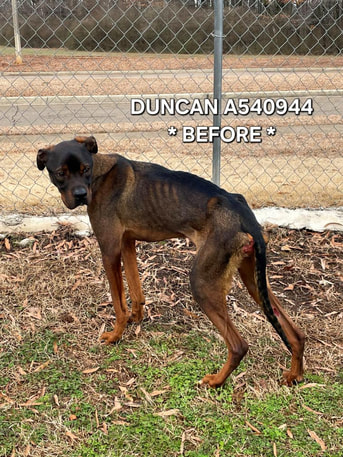
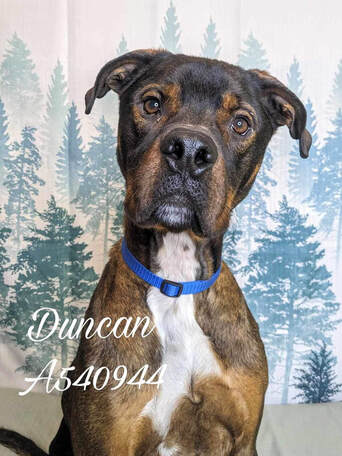
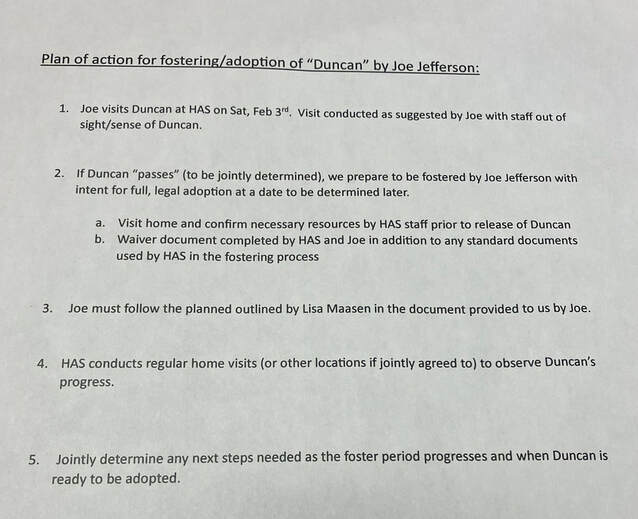
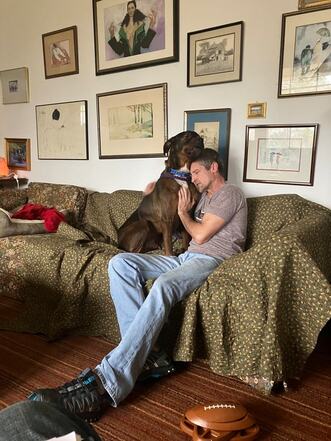
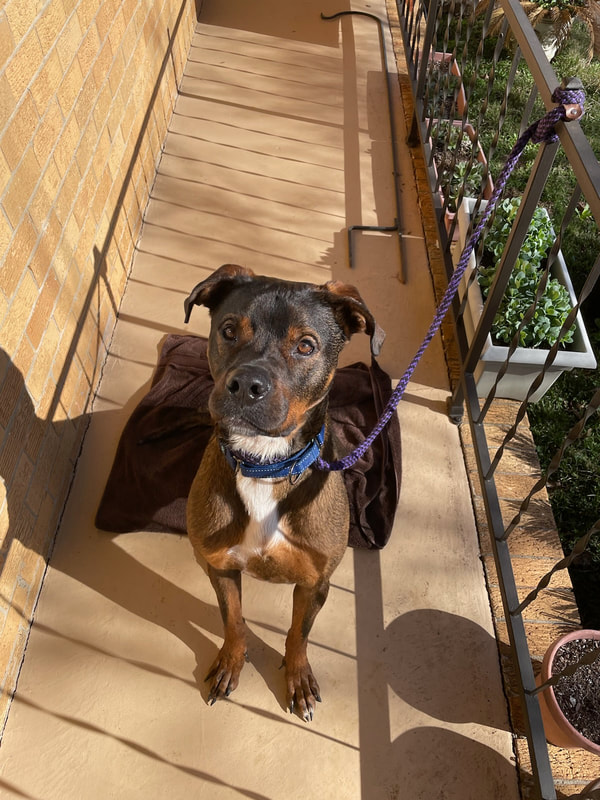
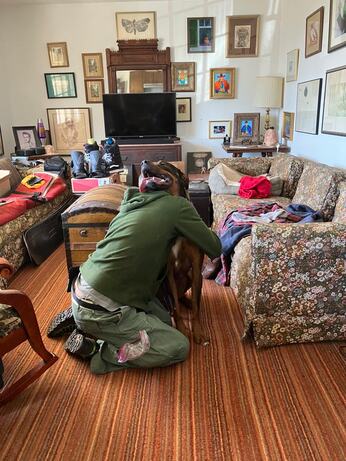

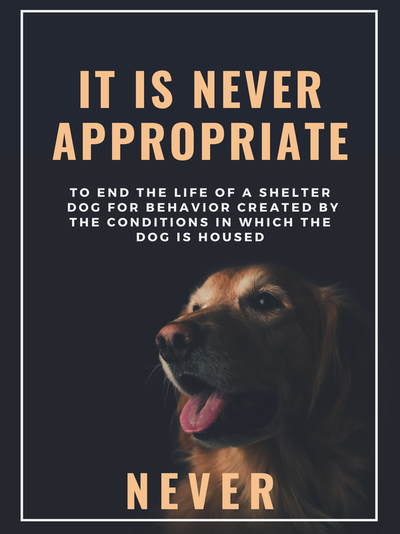

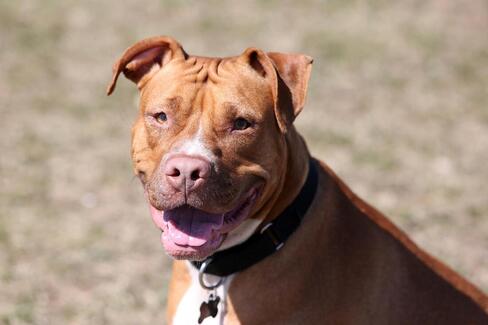




 RSS Feed
RSS Feed